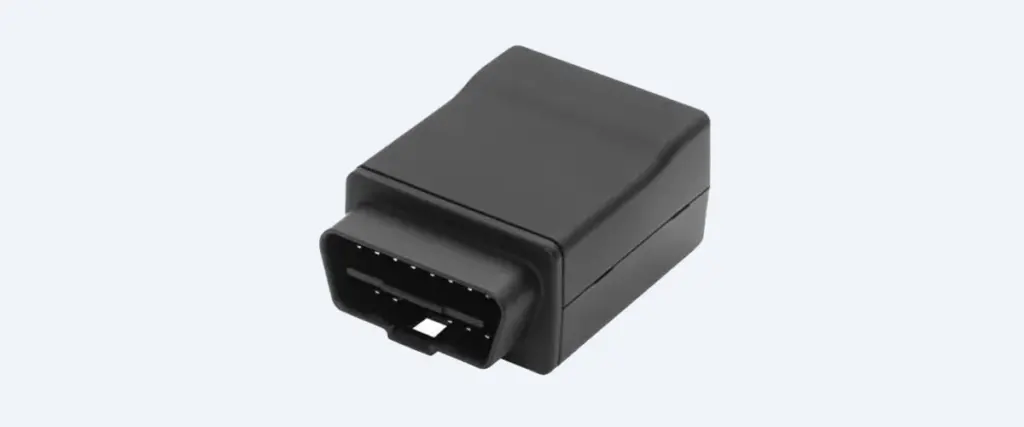Want personalized auto insurance? Telematics tracks your driving habits and can earn you discounts for being a good driver. But beware: some insurers now surcharge poor driving behaviour.
Find out more about how telematics can save you money on your auto insurance.
What are telematics applications?
Telematics applications are what powers usage-based insurance, an entirely optional program offered by insurers that tracks driving behaviour and assigns more accurate rates.
Telematics devices traditionally track the following:
- Sudden braking
- Acceleration rate
- Idling
- When you drive (time of day)
- How far you drive
- Vehicle speed
- Vehicle positioning
- Distance travelled
- Distracted driving (with the mobile app)

Telematics data is collected most through an app on your smartphone or sometimes through a small device that is plugged into either your CAN-BUS or OBD II port. The data is analyzed by your insurance company and used to gauge your overall driving behaviour, patterns, and trends. The information is used to calculate personalized auto insurance premiums for you – perhaps at a discounted rate!
Which insurance companies offer telematics, and which surcharge?
If you score poorly while using telematics, you won’t qualify for a discount after the initial review period, and some insurers will even penalize you for risky driving behaviour (with a maximum of a 10% surcharge). Here are the insurers Mitch works with that currently offers telematics and some details about the program they offer:
| Carrier & Program | Eligibility Requirements | Enrollment Discount (%) | Potential savings (%) | Surcharge (Y/N) | Rate Change Frequency |
|---|---|---|---|---|---|
| Aviva: “Aviva Journey” |
| 10% | Up to 20% | Y (up to 5% increase) |
|
| CAA: “CAA Connect” |
| 5% | Up to 15% | N |
|
| Intact: “my Drive” |
| 10% (Applies on new policy term) | Up to 25% | Y |
|
| Pembridge: “My_Bridge” |
| 2.5% | Up to 30% | N |
|
| Travelers: “IntelliDrive” |
| 10% (Avail. for new business only) | Up to 30% | Y (up to 10% increase) |
|
| Wawanesa: “Drive Change” |
| 10% | Up to 25% | N |
|
| Data sources: Aviva Journey; CAA Connect; Intact My Drive; Pembridge My_Bridge; Travelers IntelliDrive; Wawanesa Drive Change; | |||||
Some companies have continuous telematics monitoring, while others are for a set period of time. If your scores aren’t ideal, you can opt out after the initial period to avoid surcharges on your insurance
What are some concerns drivers have about telematics?
An initial concern with telematics was to do with privacy. Back in 2013, car-tracking devices were the subject of fear and doubt. This came, in part, due to a lack of understanding as to how telematics devices worked, as drivers were afraid telematics devices were being used to track their location. A study in 2022 from MonkeyGeek examined the likelihood of drivers accepting telematics devices and found Gen Z drivers were the most open to the idea, followed by millennials.
Telematics devices do not track driver locations. Instead, they track behaviours that can be monitored through the application or black box, such as how long the car was being driven for, how fast it was being driven, how fast it braked, etc. Unfortunately, this isn’t common knowledge with many would-be participants of the program.
Changing driver behaviour through awareness
The point of telematics from the insurance companies’ perspective is to try and reward good drivers who are less likely to get into an accident. Some insurers also say they’re trying to change people’s driving behaviours through awareness.
Drivers are likelier to watch their driving behaviours, especially when incentivized with discounts. Through feedback from telematics apps, they can see how each of their trips adds up and how well they score, meaning that as they drive each day, they’re likelier to make better choices.
It’s a win-win. Drivers get better rates, insurers get lower-risk clients, and the roads stay safer.
Should you try telematics?
Telematics applications can be a way to save on your auto insurance. When you sign up, there may be an initial period of data gathering where you can gauge whether or not the program is right for you. If eligible, you’ll receive a sign-up discount (usually around 10%) and additional savings based on your scoring on your first renewal. You will also have an initial period to discover just how the app will score you.
Usage-based insurance, or telematics, are entirely optional. If you’re a not-so-great driver or a driver still adjusting to Canada’s road laws, signing up for a telematics program may not be the wisest decision. If you do register but then decide you no longer want to participate, cancellation is easy. All you need to do is call your insurer at any point during your policy period. Since the program is optional, there’s no surcharge for cancellation nor time limit to doing so.
While the average customer does save on their premiums, again, if you’re not confident in your driving habits, you don’t have to opt in. If you’re uncertain about your driving, telematics can actually encourage you to practice safer behaviours, or even to drive less. It’s usually a good fit for younger drivers who are already facing higher premiums, as they’ll receive the most savings.
Ultimately, it’s your choice. Speak with a Mitch insurance broker to learn more about telematics and see if they’re right for you.
Thanks to Mitch Insurance’s Cassie Gilroy, retention manager in service, for her input on this post.
Looking for car insurance?
Speak with a Mitch Insurance broker today to get a quote on Ontario auto insurance.
Call now
1-800-731-2228






